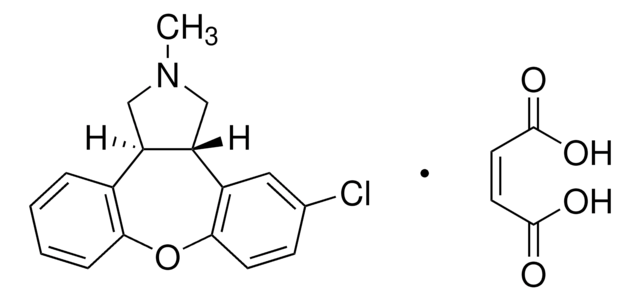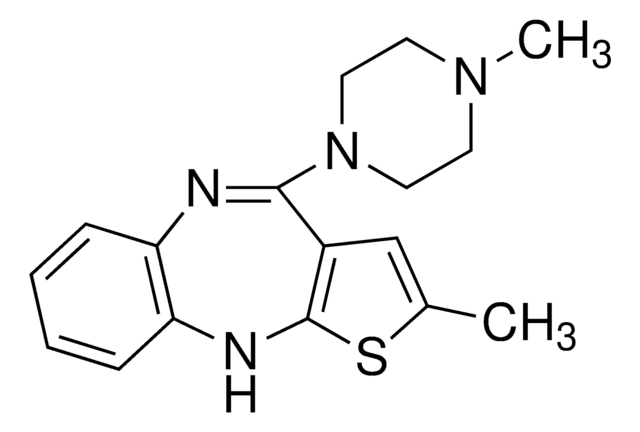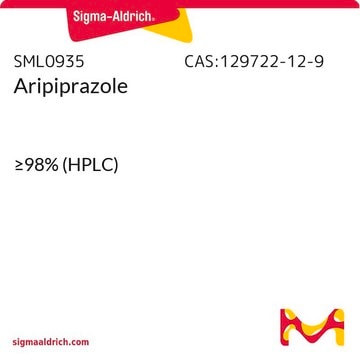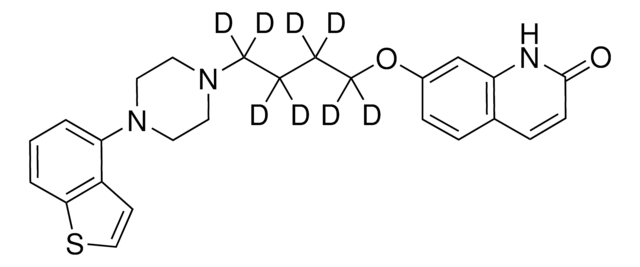Z0877
Zotepine
Synonym(s):
2-[(8-chlorodibenzo[b,f]-thiepin-10-yl)oxy]-N,N-dimethylethanamine
Select a Size
Select a Size
About This Item
Recommended Products
Assay
>98% (HPLC)
Quality Level
form
powder
color
white to off-white
solubility
DMSO: ≥20 mg/mL
originator
Astellas
storage temp.
room temp
SMILES string
CN(C)CCOC1=Cc2ccccc2Sc3ccc(Cl)cc13
InChI
1S/C18H18ClNOS/c1-20(2)9-10-21-16-11-13-5-3-4-6-17(13)22-18-8-7-14(19)12-15(16)18/h3-8,11-12H,9-10H2,1-2H3
InChI key
HDOZVRUNCMBHFH-UHFFFAOYSA-N
Application
Biochem/physiol Actions
Features and Benefits
Signal Word
Warning
Hazard Statements
Precautionary Statements
Hazard Classifications
Acute Tox. 4 Oral - Aquatic Acute 1 - Aquatic Chronic 1
Storage Class Code
11 - Combustible Solids
WGK
WGK 3
Flash Point(F)
Not applicable
Flash Point(C)
Not applicable
Choose from one of the most recent versions:
Certificates of Analysis (COA)
Don't see the Right Version?
If you require a particular version, you can look up a specific certificate by the Lot or Batch number.
Already Own This Product?
Find documentation for the products that you have recently purchased in the Document Library.
Articles
We offer many products related to dopamine receptors for your research needs.
We offer many products related to serotonin receptors for your research needs.
Active Filters
Our team of scientists has experience in all areas of research including Life Science, Material Science, Chemical Synthesis, Chromatography, Analytical and many others.
Contact Technical Service










